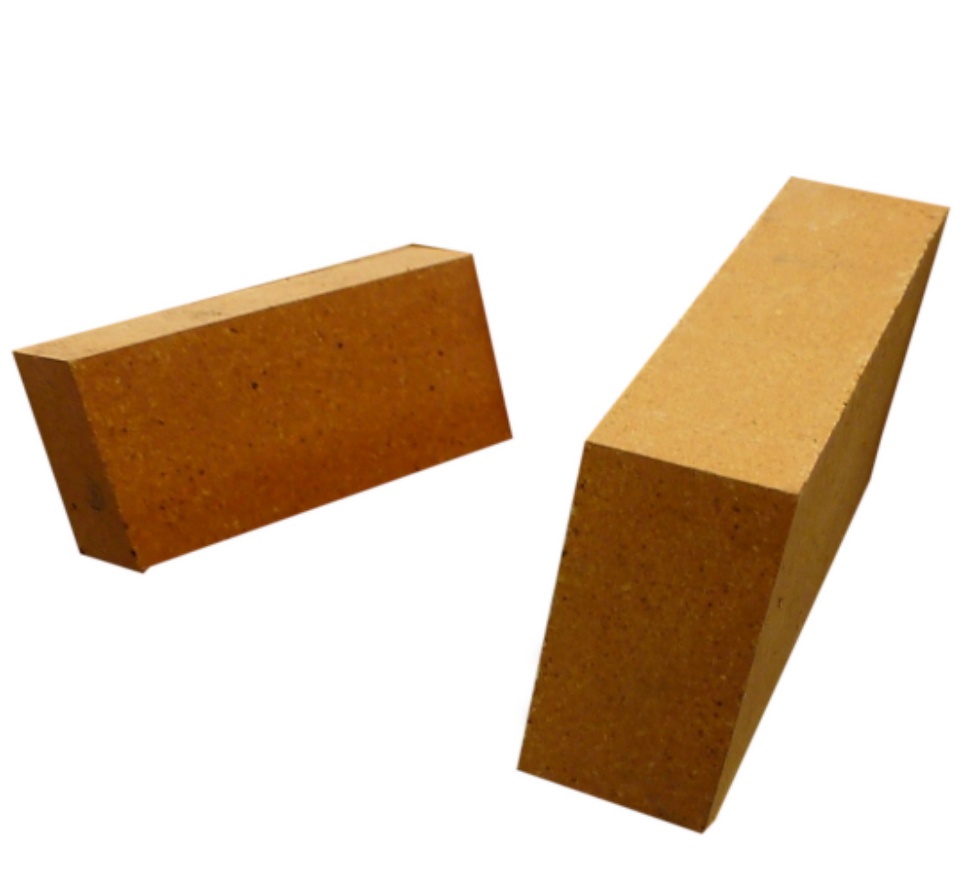Buy Low Cost high Quality Bottom Pouring Refractory Bricks are manufactured with various types of base raw materials to achieve the high performance, high application service temperature requirement, ensure very smooth casting, and cost reduction objectives. These bricks are produced and available in three different types of materials: low cost fire clay, high alumina, and andalusite base materials.
Bottom pouring bricks, also known as bottom pouring blocks or bottom pour refractories, are specialized refractory products used in the steel and metal casting industries. These bricks are designed to facilitate the controlled pouring of molten metal from the bottom of a ladle or furnace during the casting process. Here are some key points about bottom pouring bricks:
Purpose: Bottom pouring bricks are used to create a refractory lining at the bottom of a ladle or furnace, forming a well or nozzle through which the molten metal is poured. The refractory lining provides thermal insulation, erosion resistance, and stability during the pouring process.
Construction: Bottom pouring bricks are typically made from high-quality refractory materials, such as alumina, magnesia, or a combination of both. They are carefully shaped and sized to fit the bottom configuration of the ladle or furnace.
Features: Bottom pouring bricks have specific features that enable efficient and controlled metal pouring, such as:
Well or nozzle design: The bricks are designed with a well or nozzle that allows the molten metal to flow smoothly and consistently during the pouring process. The shape and size of the well or nozzle can vary based on the specific requirements of the casting process.
Thermal insulation: Bottom pouring bricks provide thermal insulation to prevent excessive heat loss during the pouring operation, ensuring the molten metal remains at the desired temperature.
Erosion resistance: The refractory materials used in bottom pouring bricks are selected for their resistance to erosion caused by the turbulent flow of molten metal. This helps to maintain the integrity and longevity of the refractory lining.
Installation: Bottom pouring bricks are installed at the bottom of the ladle or furnace using refractory mortar or other bonding materials. They are carefully aligned and secured to form a continuous lining that can withstand the thermal and mechanical stresses of the casting process.
Maintenance and replacement: Over time, the refractory lining in bottom pouring bricks can wear out or become damaged due to thermal cycling and exposure to molten metal. Regular inspections are necessary to identify any signs of wear, erosion, or cracks. Damaged bricks can be replaced to ensure the integrity and efficiency of the pouring process.
Bottom pouring bricks are critical components in the metal casting industry, as they enable controlled and precise pouring of molten metal into molds or other casting equipment. Their design and materials ensure the efficient and reliable flow of the metal while providing thermal insulation and erosion resistance. Proper installation and maintenance of the refractory lining are essential for achieving consistent casting quality and prolonging the service life of the bottom pouring bricks.
Bottom Pouring Bricks
Get Quote / Price
Get Quote / Technical Specs
At we manufacture, source, and supply wide range of Refractory Bricks and Insulation Materials for High Temperature Applications. To learn more about Refractory Bricks please visit the following page Link
- Fireclay Insulation Bricks
- High Alumina Insulation Bricks
- Silica Insulation Bricks
- Mullite Insulation Bricks
- Alumina-Chromite Bricks
- Carbon-Bonded Chromite Bricks
- Direct-Bonded Chromite Bricks
- High Purity Magnesia Carbon Bricks
- Low Carbon Magnesia Carbon Bricks
- Corundum Bricks
- Silica-Bonded Alumina Bricks
- Calcium Silicate Insulation Bricks
- Zirconia Insulation Bricks
- Alumina-Silicon Carbide Bricks
- Andalusite Alumina Bricks
- Dense Silica Bricks
- Acid-Resistant Silica Bricks
- Diatomite Insulation Bricks
- Vermiculite Insulation Bricks
- Fused Silica Bricks
- Alumina-Magnesia Carbon Bricks
- Spinel-Magnesia Carbon Bricks
- Nano-Composite Magnesia Carbon Bricks
- Direct-Bonded Magnesite Bricks
- Fused-Bonded Magnesite Bricks:
- Chemically Bonded Magnesite Bricks
- Carbon-Bonded Magnesite Bricks
- Spinel-Bonded Magnesite Bricks
- Magnesia-Chrome Bricks
Get Price
Click here to send enquiry and get best price for your location.
































